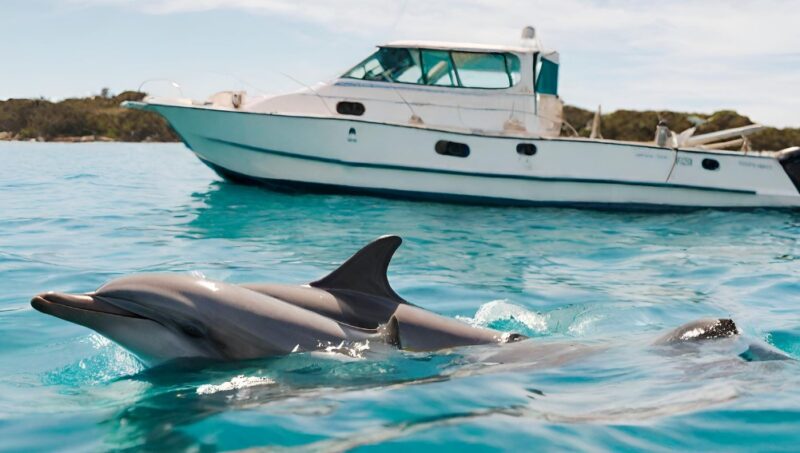Have you ever wondered why dolphins swim alongside boats? It’s a common and fascinating sight, especially if you’re lucky enough to see it up close.
The main reason they do this is because they are curious and playful animals. They are attracted to the motion and sound of boats moving through the water.
This behavior, known as bow riding, is like a fun game for these animals. They use the waves created by the boat to glide and jump, showing off their agility and speed.
Dolphins are social creatures and this interaction with boats is just another way they engage with their environment and each other
Key Takeaways
- Dolphins swim alongside boats primarily due to their playful and curious nature, and this behavior is known as bow riding.
- Specific species like the Bottlenose Dolphin, the Common Dolphin, and the Pacific White-Sided Dolphin are often seen engaging in this behavior.
- These animals use echolocation, a sonar-like ability, to navigate and hunt, which might also contribute to their attraction to boats.
- They are highly social animals, living in groups called pods, and their interactions with boats can be a part of their social and playful activities.
- Human activities, including boating, can impact dolphins, and it is crucial to boat responsibly to minimize negative impacts on these animals and their habitat.
Scientific Reasons
Scientists have studied the reasons behind dolphins’ attraction to boats. Key among these is echolocation – a sonar-like ability these animals use to navigate and hunt.
This, coupled with their innate curiosity, might explain why they are drawn to boats. Echolocation allows dolphins to create an acoustic picture of their surroundings, enabling them to track down fish and navigate murky waters.
This sensory skill is so refined that they can distinguish between different types of fish and objects in the water. The sound of boat engines and the disturbance boats create in the water might also trigger dolphins’ curiosity, prompting them to investigate.
Influencing Factors
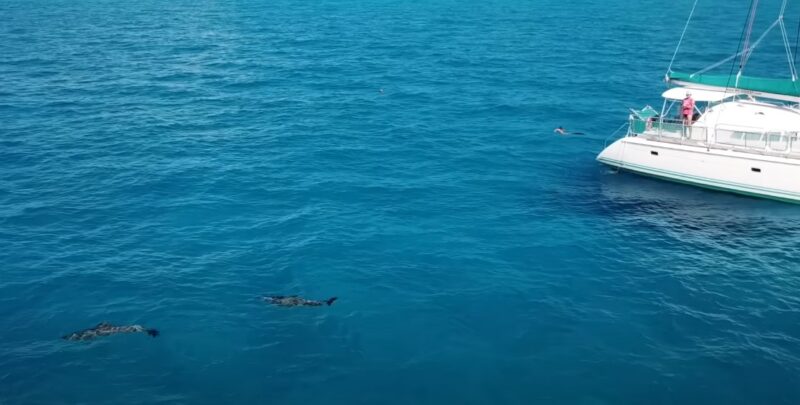
Several factors play a role in why dolphins approach boats. These include:
- the water conditions,
- speed of the boat,
- how close the boats traverse to their natural habitats.
These animals are known to be particularly attracted to fast-moving objects, making speeding boats an irresistible allure. The wake created by boats can also create a playful environment for dolphins, akin to riding waves in the wild.
Additionally, the presence of boats often correlates with fishing activities, which can attract dolphins in search of an easy meal.
However, it’s essential to note that excessive boat traffic can disrupt their’ natural behavior and cause stress, especially in areas with high boating activity.
Social Behavior
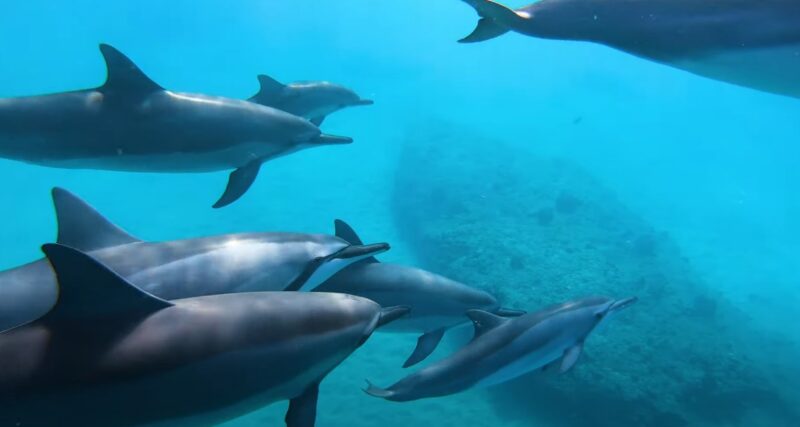
Dolphins are highly social animals, living in groups called pods. This social structure is a crucial aspect of their interactions with boats. Being in a pod means engaging in activities that strengthen their bonds, including riding the bow waves of boats.
Pods vary in size, ranging from a few individuals to over a hundred, and the composition can change over time.
Within these pods, dolphins develop strong social ties and often display cooperative behaviors such as hunting together or caring for each other’s young.
This social bonding is also a key reason why they engage in synchronous swimming and play behaviors alongside boats, as these activities strengthen their social cohesion.
Playfulness and Curiosity
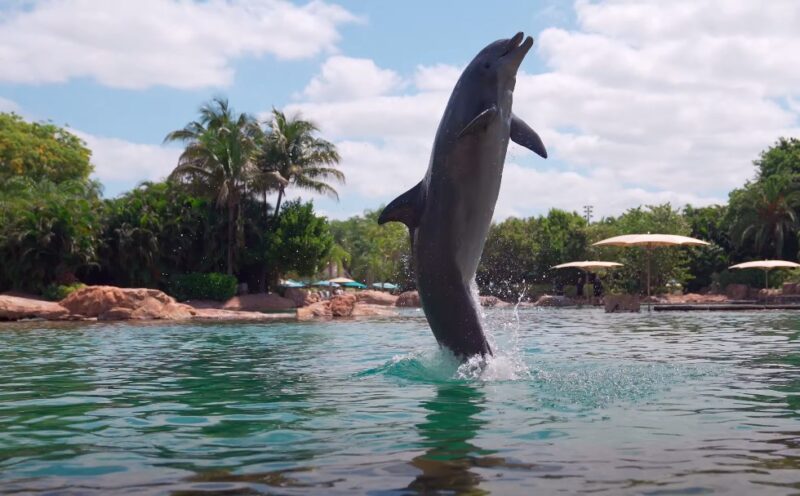
Dolphins are synonymous with playfulness and curiosity. These characteristics are fundamental to understanding why they engage with boats. It’s not just a mere interaction; it’s a playful exploration of their environment.
This playfulness is an essential part of their learning and social interaction, allowing young dolphins to develop necessary survival skills.
These animals have been observed using seaweed and other objects as toys, showcasing their ability to engage in complex play behaviors.
Their curiosity extends beyond physical play; they are keen observers of their environment and can be seen investigating novel objects or creatures, including boats and humans.
Dolphin Species
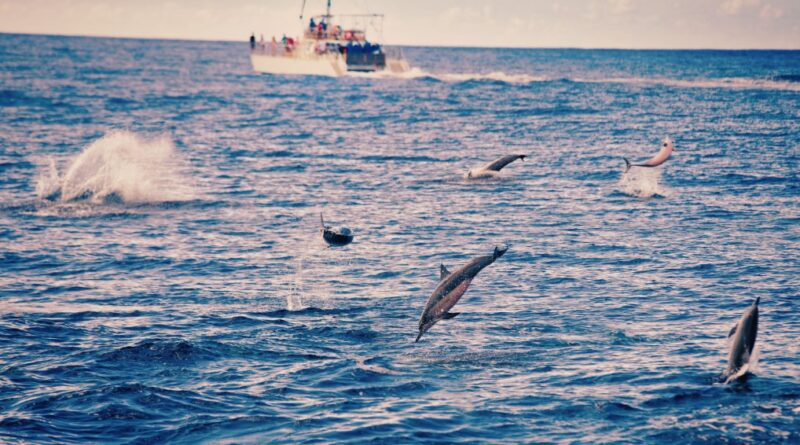
Among the diverse species in the dolphin family, some are particularly known for their affinity to human activities. Notable among these are the Bottlenose Dolphin, the Common Dolphin, and the Pacific White-Sided Dolphin.
| Dolphin Species | Characteristics | Preferred Habitat |
|---|---|---|
| Bottlenose Dolphin | Remarkable intelligence and friendly demeanor | Frequently encountered near human activities, coastal areas |
| Common Dolphin | Striking color patterns and sociable nature | Warm temperate and tropical waters globally |
| Pacific White-Sided Dolphin | High-energy and acrobatic displays | Cooler waters of the North Pacific |
Cultural Significance of This Phenomenon
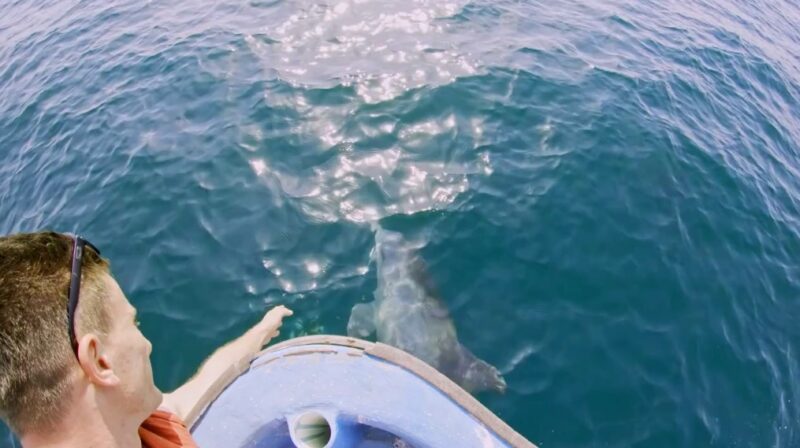
Dolphins have held a special place in maritime lore for centuries. Ancient sailors viewed them as omens of good luck, and many cultures have tales that speak of dolphins guiding ships through treacherous waters.
This deep-rooted connection highlights the intertwined histories of these animals and seafarers. In Greek mythology, they were considered sacred to both Apollo and Poseidon, symbolizing protection and good fortune.
Native American tribes revered dolphins as symbols of protection, attributing healing powers and a connection to the spirit world to them.
In modern times, these animals continue to be featured prominently in literature, film, and art, symbolizing freedom, intelligence, and the spirit of exploration.
Human Impact
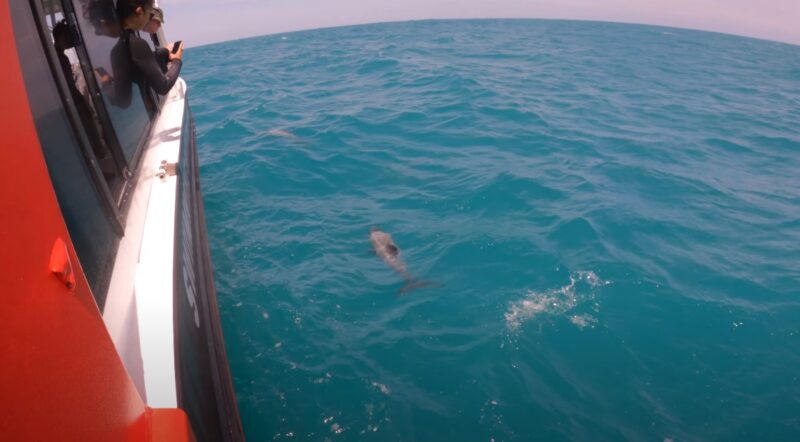
While these interactions are often delightful, they can have implications for dolphins. Human activities, including boating, can impact their natural behavior and habitat. It’s crucial to boat responsibly to minimize negative impacts.
Noise pollution from boats can interfere with dolphins’ echolocation and communication, leading to disorientation and stress. Chemical pollutants and debris from boats can also harm dolphins’ health and the marine ecosystem they inhabit.
It is essential for boaters to maintain a respectful distance from them, avoiding actions that might disrupt their natural behavior or cause them harm.
FAQs
Can dolphins communicate with humans when they swim near boats?
While these animals are highly intelligent and can understand some human gestures, there is no scientific evidence to suggest that they can communicate directly with humans in a complex manner. Their interactions with boats are more about play and curiosity than communication.
Do dolphins ever get hurt while swimming near boats?
Unfortunately, yes. They can get injured by boat propellers or become entangled in fishing gear. It’s crucial for boaters to be vigilant and maintain a safe distance to prevent such accidents.
How can I tell if a dolphin is stressed or feeling threatened by a boat?
Signs of stress in these animals include rapid swimming away from the boat, erratic movements, or a sudden change in swimming patterns. If you observe these behaviors, it’s best to move away and give them space.
Are there specific times of day when dolphins are more likely to swim near boats?
They can be seen swimming near boats at any time of day. However, their activity levels and patterns might vary depending on their feeding and social behaviors, which can be influenced by the time of day and environmental conditions.
Is it legal to feed dolphins when they come close to boats?
In many places, it is illegal to feed wild dolphins as it can alter their natural behavior, make them dependent on humans for food, and potentially put them in harm’s way. Always check local regulations and practice responsible wildlife viewing.
Can the presence of dolphins benefit the ecosystem around boats?
These animals play a vital role in marine ecosystems as both predators and prey, helping to maintain a healthy balance. Their presence can indicate a healthy environment, but it’s important to ensure that human activities like boating do not negatively impact this balance.
Final Thoughts
In summary, dolphins swim alongside boats because it’s a playful and natural behavior for them. This interaction showcases their curiosity, intelligence, and social nature.
As observers, it’s important to respect these magnificent creatures and ensure our activities do not harm them. Responsible boating and an understanding of dolphin behavior can help maintain the balance between human activities and the well-being of marine life.


